 hen we turn the pages of the Kashmir Shaiva agamas, we come across the Bahuroopa Garbha Stotram. Our ancestors would recite this Stotram after the morning Sandhya--oblations in their Puja rooms, popularly known as the Thokur Kuth. Since Kashmir Shaivism has influenced the very nerve of Kashmiri Pandit spiritual heritage, it was obligatory for the elders in the family to memorise this Stotram, to avoid any obstacle in their Puja, meditation, pilgrimage etc., and to be self confident in their routine work. It would serve them as their Kavacham/spiritual sheild. A few elderly do recite this stotram in the morning and evening, but it is being recited during Kashmiri Pandit traditional Homas/Yajnas before performing the Shiva Swahakara of 1000 names. hen we turn the pages of the Kashmir Shaiva agamas, we come across the Bahuroopa Garbha Stotram. Our ancestors would recite this Stotram after the morning Sandhya--oblations in their Puja rooms, popularly known as the Thokur Kuth. Since Kashmir Shaivism has influenced the very nerve of Kashmiri Pandit spiritual heritage, it was obligatory for the elders in the family to memorise this Stotram, to avoid any obstacle in their Puja, meditation, pilgrimage etc., and to be self confident in their routine work. It would serve them as their Kavacham/spiritual sheild. A few elderly do recite this stotram in the morning and evening, but it is being recited during Kashmiri Pandit traditional Homas/Yajnas before performing the Shiva Swahakara of 1000 names.
For the devotees,it is believed to be a boon,given by Shri Svachhanda Bhairavanath himself, to protect the Dharma --Artha--Kama -- Mokhsha. The recitation of Bhawani Sahsranama along with the Indrakshi Stotram, during Homa--Yajnas, is still practised in kashmiri Pandit heritage. Indrakshi Stotram has become a part of the daily Puja even in K P diaspora. Indrakshi and the Bahuroopa Garbha are said to be complementary to each other. It is known as the SAMPUTA Patham, as the tradition goes.
What is Bahuroopa Garbha?
Literally Bahuroopa means--multifaceted, and Garbha means -the womb. Bahu also reflects much, many, frequent, numerous, and considerable in quantity. Therefore, the Bahuroopa means variegated and manifold. Garbha stands for an inner apartment,abode of the creation, and a temple. Thus it means that the Bahuroopa Garbha is the multifaceted existence of the Eternal womb,having its source in the Yajurveda, which speaks of Hiranya Garbha as under:
"Hiranya Garbha Samvarttata-agre Bhutasya Jatah Patir Eka--aasit
Sa Dhadhar Prithvim dhyaam- utamaam Kasmai Devaya Havisha Vidyema"
The One, who is the Lord of Eternal Light--the creator of self-illumination, the creator of the radiant Solar system and the luminous. He is conscient being--the omnipresent One moon, He sustains the earth, and other planets, still we do not know to whom Devata/Godhead, should we make our oblations.
- -------------------Yajurveda Chaper13, Mantra 4
The Bahuroopa Garbha is an answer to the Vedic Rishi's prayer, to know about the mystery of the Absolute Truth. This Stotram equipped with its own Gayatri and the Bija Mantra has been given to Bhairavi by Rudra Bhairava himself.
Bahuroopa Garbha is an aspiration of the Divine Mother --Bhairavi in the paradox of life. Divine Mother is an inward urge, because she intends to nurse the sleepless children through a discussion about a Kavacham/ spiritual sheath. It lends a purport to the renderings of the mind. Bahuroopa Garbha is an absolute potent Mantra, governed by Bhairavi's immense love for humanity--the torch bearers of the Sanatana Dharma/ Eternal truth.
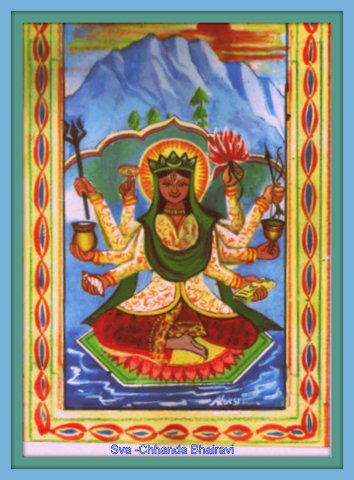
Format of Bahuroopa Garbha:
It is unlike the Upanishadic tradition, where the deliberation takes between the disciple and the preceptor,about the nature of Godhead, which is termed as 'Brahman.
It is a dialogue between Bhairava-- the Male principle of Divinity and Bhairavi--the Female principle of Divinity about the welfare of the devotees in general and the initiated Shaivites in particular.
The main subject matter revolves around the aggression caused by the Anti divine forces. The human beings suffer from the natural calamities, with the wrath of wild beasts,vipers and poisonous snakes and other venomous reptiles. Bahuroopa Garbha recitation saves a man from untimely death etc., and grants mental strength to fightfearful odds, which do occur in life.
Svachhandanath Bhirava is the subject matter of the Bahuroopa Garbha Stotram. The name suggests the Self willed Bhairava, who is Shiva himself. He is adored as the Chieftain of the Bhairavas.Verily, he is the cause of Brahma--Vishnu --Maheshvara. He is in harmony with his own Shakti--the Bhairavi, who is herself the innate force behind the Svachhanda roopa, which is Aghora Roopa of Shiva.
His abode is Kailasa, always absorbed in his meditative nature, but Devi Parvati--the spiritual consort is concerned about thewelfare of the devotees,who are subjected to the evil doings of the anti divine forces, bent upon hurting them,and deviating them from their Dharma. Her focus is on Dharma, both immanent and beyond, which transcendent in nature. It supervises the measureless movements of the soul,in the realm of boundless silences. Thus it creates the Aghor Mantra--highly potent.
The Bhairavi wants that the devotees not knowing the multitude of the Mantras of various frequencies, syllables with ascent--descent and balanced,as described in the Vedas, should keep themselves away from all types of evil forces,be taught the simple Mantra, easily intelligible which is but the Mantrik body of the Bhairava.
Shiva explains her the truth hidden in the word and syllable of the Bahuruupa Garbha Mantra, which is All Benign in nature. It helps the devotees to make the Yajnas fully directed towards the Devatas when the Stotram is recited before the Yajnas.
All the curses caused by way of deviation, from the violition of 'time', needs a Prayashchita---- atonement. It should be recited in the morning as well as in the evening for bestowing upon the devotees unparralled peace of mind,higher sense of spirituality and one pointed devotion to Svacchhanada-- nath Bhairava. It fills with the glory of happiness,with safe Mudra--clinging of fingers locked in the Shaivi tradition.
The Dhyana Mantra says: The Svachhanda nath Bhairava is of five faces with fifteen eyes.His aura surpasses the millions and billions of solar galaxies.His Shakti revered as Bhairavi is on her left side. The moon is visible on his face, which looks like a crown on his heads.
He holds "Shakti missile" and roams with the Abhaya mudra, to protect his devotees,and to maintain the cycle of cosmos in motion.
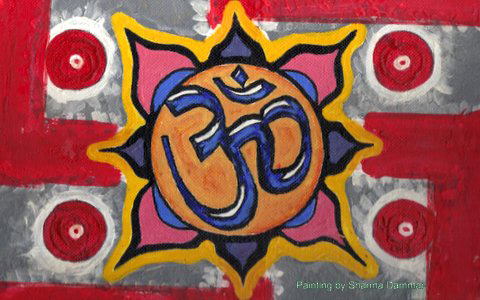
Niceties of the dialogue:
During discussion about the welfare of the devotees--both Shaktas and Shaivas, the Svacchanda-- nath Bhairava addresses Parvati as "Devi, Priya, Raja Rajeshvari, Maheshaani and Bhairavi". This suggests that Shiva explains to Parvati that she is the Ultimate Shakti, which controls the whole universe, in your MotherNature aspect of reality. Verily, this is the jewel word, as seen in the Shakti tradition from Kashmir to Kanyakumari. Our life hasopened with divinity.,enveloped in a cloak of unsurpassing love ,seen in the Ardhanareshwara human earth still demands that Divinity, and for that cery reason Bhairava and Bhairavi become enchanted in giving the Bhahuroopa-- Gabha Mantra.
Philosophically, this Storam is dualistic in nature,but with an emphasis on the "Bhairava--Bhairavi Eka Ruupah" --One form of Bharava and Bhairavi.
In the Vibhava/emotional state of Bhairava, Bhairavi is is quite Raja rajeshwari of acquitance, with a clear concept of differentials,where she supports the universe through Bhairava in his various forms--literally Bahuroopa, ans sees the Garbha in its eternal form of "Prologue, Mudras--Gayatri--Chhandas/meter, Dhyanam and epilogue. Form the Agamic point of view, this stotram is a Natyam--a Divine play played at the mount Kailasa, always curious to explain the visual effects of the earth bound humanity, where the sky bound, celetial deities, and the other embodied souls play their part, but man/woman being the central figure,needs divine intervention,due to his/her limited physical strength and mental poise. Divine intervention is called the Anugraha--supreme grace.
Shiva has been described as a foot-soldier, with no rest in his Bahuroopa manifestation. The secret behind Bhairava's self manifestation is the urge of Bhairavito see Unseen grow visible to the devotees, and audible to the Rishis.
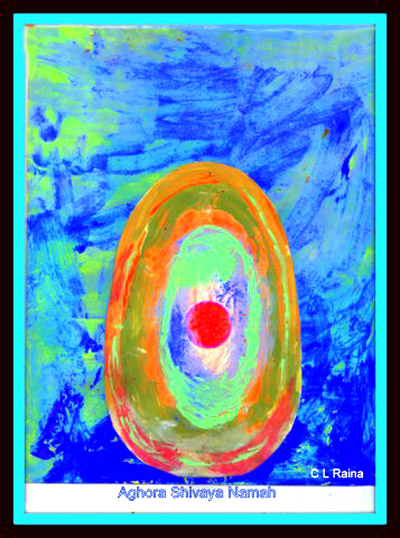
Why in this celestial play the role of Dakini and Sakini?
A description about Dakini-- Sakini etc.has been given to suggest that the Bhairavi assumes some dreadful forms, only to defeat the malicious designs of the Asuras. These evil forces diturb the law of nature and prevents the Sadhakas to carry on the Homas and Yajnas.
Dakini's provokes man/woman's ignorance and his/her obstinate strength.only to yoke pain grief and suffering.
Ritualistic approach
It needs to be recited with Nyasas--feeling the Divine energy in one's own self, followed by its own Gayatri evolved from the Bahuroopa Garbha Mantra.
Epilogue needs to be recited, to maintain its efiicacy in the Mantra and Stotra.
About the Pattern of recitation
- 1 The first 4 Shlokas work out as the prologue.
- 2 Bhairava puts the sufferings before Devi, and suggests the means to end the sufferings, in 12 Shlokas.
- 3 Sankalpa, which is to make a "will to do" the recitation. It consists of one Mantra in prose,as an invocation.
- 4 Viniyoga is application.It is a combination of Rishi-Chhanda, Devata, Bijam Shakti, Kilkam and Prityartha.
- 5 Nyasa--Inviting the Devata to be in limbs.
- 6 Pranayama with the Bhahuroopa Garbha mantra.
- 7 Dhyana Murti consisting of 15 Shlokas.
- 8 Stotram consists of 34 Shlokas.
- 9 Phala shruti-- 9 Shlokas, as epilogue
|
Copyrights © 2007 Shehjar online and KashmirGroup.com. Any content, including but not limited to text, software, music, sound, photographs, video, graphics or other material contained may not be modified, copied, reproduced, republished, uploaded, posted, or distributed in any form or context without written permission. Terms & Conditions.
The views expressed are solely the author's and not necessarily the views of Shehjar or its owners. Content and posts from such authors are provided "AS IS", with no warranties, and confer no rights. The material and information provided iare for general information only and should not, in any respect, be relied on as professional advice. Neither Shehjar.kashmirgroup.com nor kashmirgroup.com represent or endorse the accuracy or reliability of any advice, opinion, statement, or other information displayed, uploaded, or distributed through the Service by any user, information provider or any other person or entity. You acknowledge that any reliance upon any such opinion, advice, statement, memorandum, or information shall be at your sole risk.
|
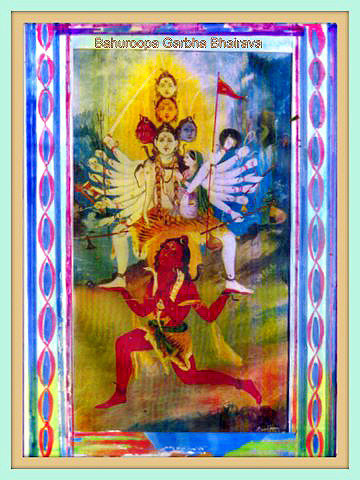
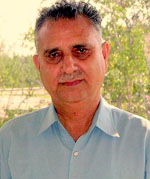 *Dr. Chaman Lal Raina
*Dr. Chaman Lal Raina 


